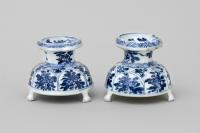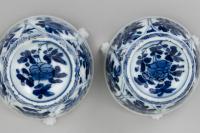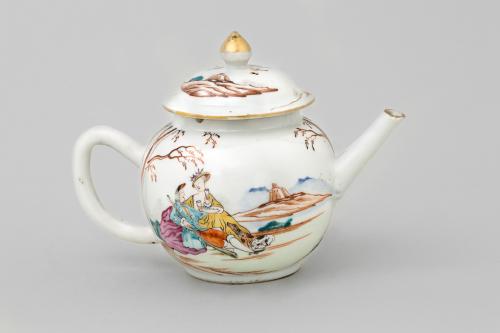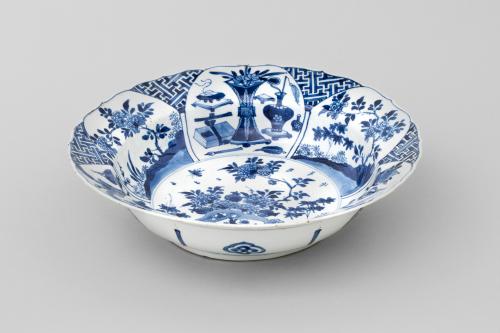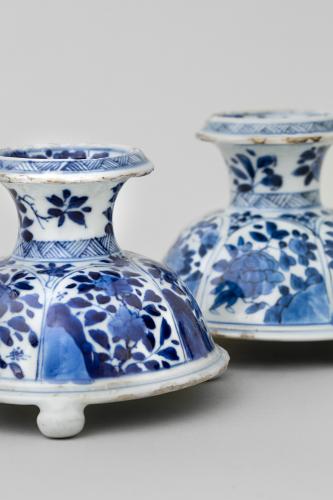
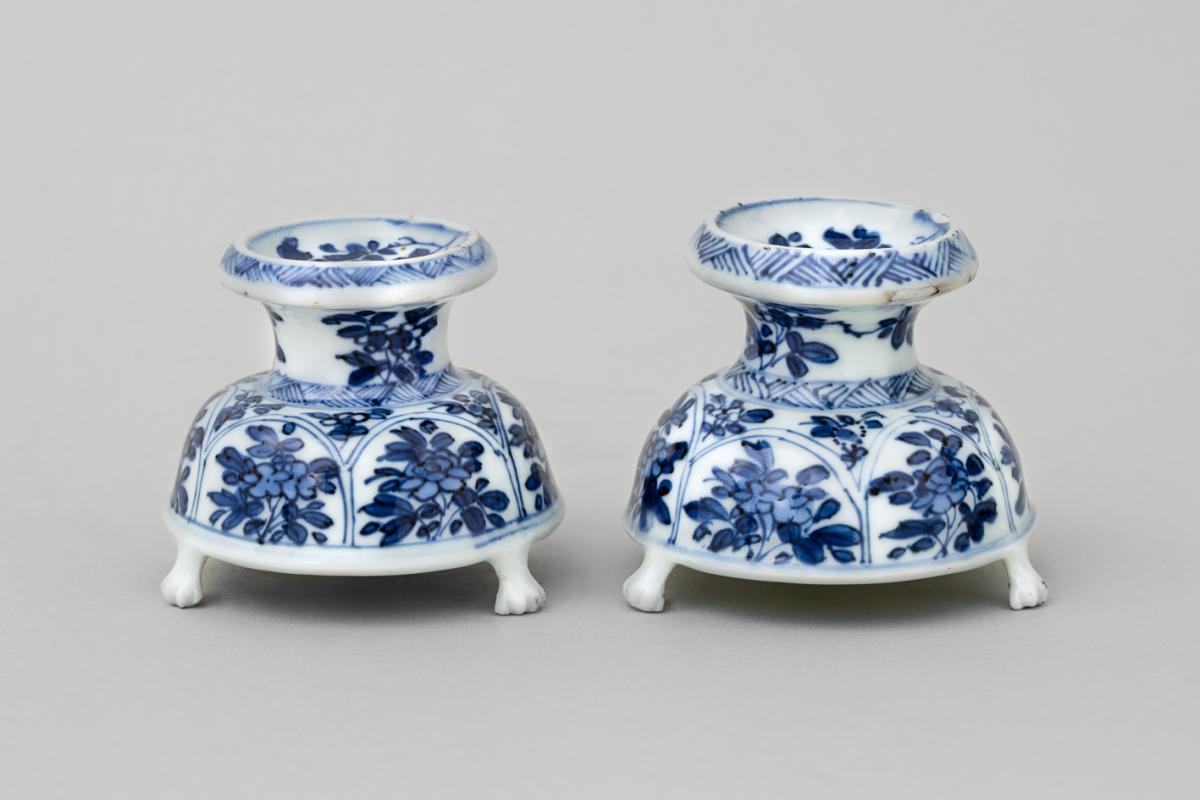
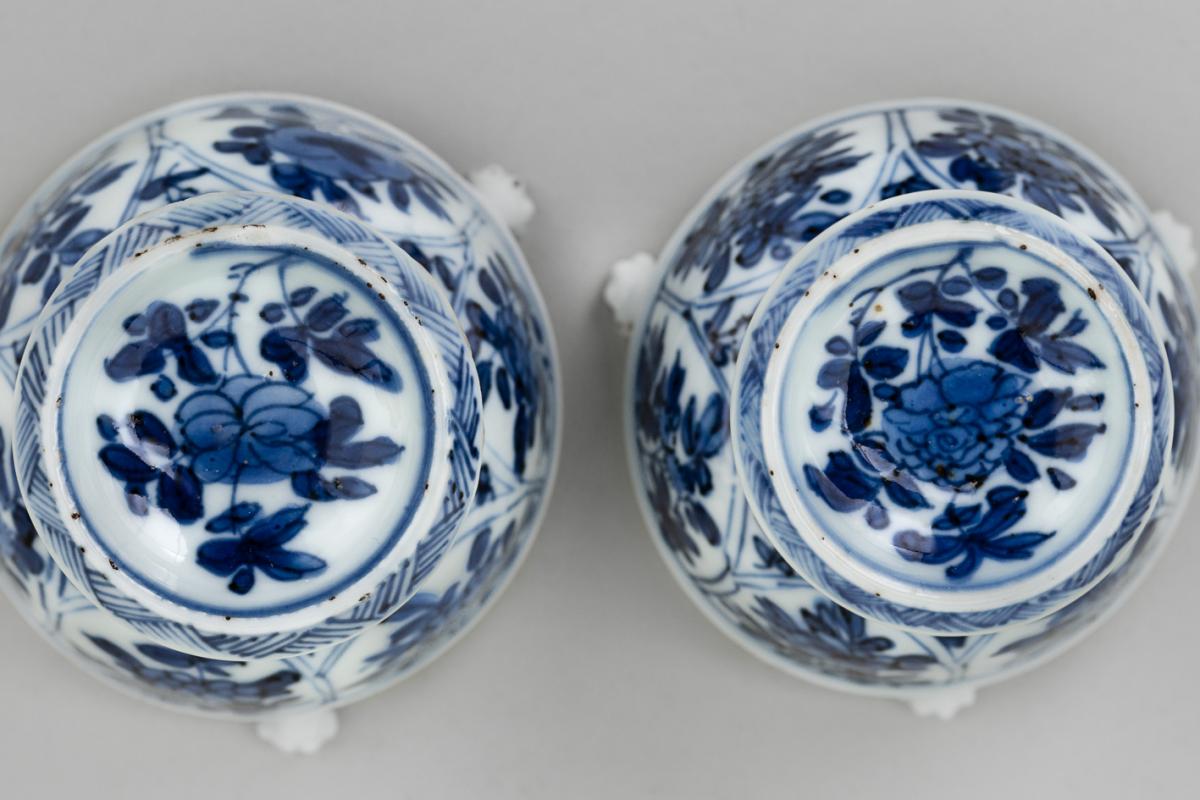
Price on application
This object is eligible for a Certificate of BADA Provenance
The BADA Standard
- Since 1918, BADA has been the leading association for the antiques and fine art trade
- Members are elected for their knowledge, integrity and quality of stock
- Our clients are protected by BADA’s code of conduct
- Our dealers’ membership is reviewed and renewed annually
- Bada.org is a non-profit site: clients deal directly with members and they pay no hidden fees
A Pair of Rare Chinese Salt Cellars.
Of diablo shape, the high, domed body on three delicately moulded feet, a short, straight neck widening into a flared rim, which opens up to the shallow bowl of the salt; decorated in underglaze blue, the body with slightly raised lotus-shaped panels each filled with various plants, including peonies; the shoulder and rim with cross hatch border, the neck adorned with blossoms, and the concave top with a single carnation bloom, all set within double blue lines.
Period: Kangxi (1662-1722) probably before 1700.
Footnote: For an example of the same shape but with different decoration see Volker and Brill (Leiden 1971) ‘Porcelain and the Dutch East India Company’, no.23. These salts are recorded as fine Kangxi, after 1683.
The shape of these salts is based on a Dutch prototype, and decorated with a Chinese blue and white design for export, something that is not found on the Dutch model. Although the shape of the feet vary, the cup is always small and shallow. Interestingly, both the design and the pattern, including the lotus-shaped panels, were copied by the Japanese at Arita circa 1700 (see Jörg 2003. p.164). There are examples of Japanese Arita salts in this style in the collection of the Ashmolean Museum, Oxford, and in the Victoria and Albert Museum, London (museum number V&A FE.75-1970). Also see Ayers (1990) ‘Illustrated Porcelain for Palaces’p.206, pl.202, for further comparable examples of Japanese salts made in the Chinese Kangxi style.
When these salt cellars were made, they would have been prominently placed on an elaborately laid table. They would not have been ordered as part of a dinner set, but separately as a luxury item (see Jörg ‘Famille Verte: Chinese Porcelain in Green Enamels’ (2011) p.148).
Dimensions
Height: 7 cm; 2 ¾ inStock number
BE36The BADA Standard
- Since 1918, BADA has been the leading association for the antiques and fine art trade
- Members are elected for their knowledge, integrity and quality of stock
- Our clients are protected by BADA’s code of conduct
- Our dealers’ membership is reviewed and renewed annually
- Bada.org is a non-profit site: clients deal directly with members and they pay no hidden fees


